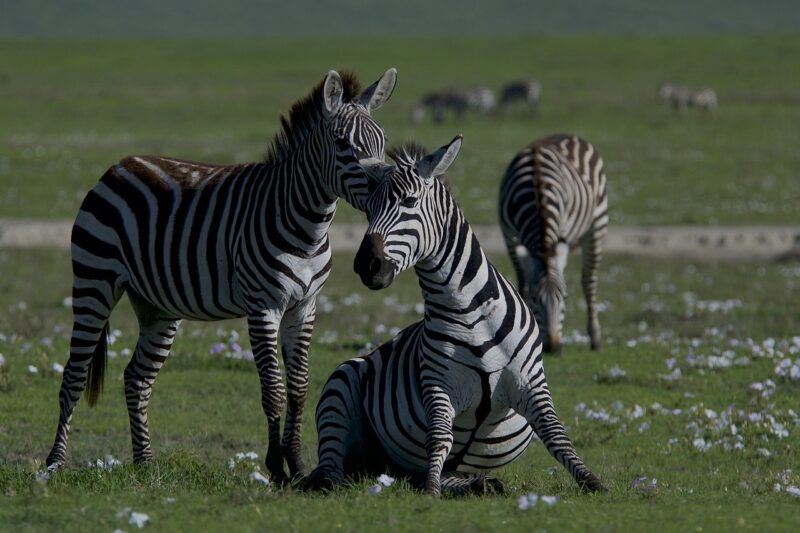Could an Alien Ecosystem Resemble Earth’s? The Possibilities Are Fascinating
November 12, 2024

The exploration of extraterrestrial life has captivated human imagination for centuries. From speculative fiction to scientific inquiries, the question persists: Could alien ecosystems mirror that of Earth? As we delve into this intriguing subject, we will explore the fundamental principles of biology, the unique factors that shape ecological systems, and consider real-world examples drawn from our solar system and beyond.
1. Understanding Ecosystems: Earth as a Template
An ecosystem comprises interacting organisms and their physical environment within a defined area. Earth’s diverse ecosystems are structured around intricate relationships between flora, fauna, and abiotic factors like soil, water, and climate. These systems are remarkably adaptable, evolved over billions of years under a specific set of conditions.
For instance:
- Tropical Rainforests: These vibrant ecosystems feature dense vegetation and high biodiversity, hosting countless species of plants and animals that coexist in complex food webs.
- Coral Reefs: Often referred to as the “rainforests of the sea,” these underwater ecosystems feature an array of species accountable for sustaining marine biodiversity.
- Deserts: Harsh conditions in deserts force organisms to adapt uniquely, leading to the development of specialized life forms that thrive with limited resources.
While Earth serves as a primary reference point for understanding ecosystems, the notion of alien life challenges scientists to widen their horizons. Could life evolve in conditions vastly different from those we know?
2. The Building Blocks of Life: Chemistries and Conditions
One of the most critical factors shaping an ecosystem is its biochemical composition. On Earth, life as we know it is carbon-based, relying primarily on water as a solvent. These elements form chains and structures that create complex molecules necessary for life.
However, the possibility of life existing elsewhere leads to incredibly diverse scenarios. Consider the following alternatives:
- Silicon-Based Life: Some scientists speculate that silicon, which shares many properties with carbon, could play a similar role in building biological molecules. While unlikely to form the same complexity due to its bonding limitations, silicon-based organisms might thrive in different environmental conditions, such as high heat or pressure.
- Ammonia as a Solvent: Environments rich in ammonia may support life forms whose biochemistry radically differs from carbon-based life. Ammonia can function as a solvent at temperatures much lower than water, potentially allowing organisms to exist in frigid conditions where Earth-based life could not survive.
- Extreme Environments: Life has proven remarkably adaptable. Organisms known as extremophiles thrive in environments considered inhospitable, such as hydrothermal vents, highly acidic lakes, or salty environments. If life can exist here, could it evolve elsewhere in our galaxy under different conditions?
These considerations reveal that elements and solvents shape ecosystems profoundly and support the idea that alien ecosystems may not resemble our own, but their biological principles could have parallel themes.
3. The Role of Environment: Planetary Diversity
The environment plays a crucial role in shaping ecosystems, and variables such as light, temperature, and atmospheric composition dictate the types of life that could develop. Our solar system offers several examples:
- Mars: Once a flourishing environment with water, the Martian landscape is now arid, yet scientists are exploring the possibility of microbial life in subsurface water reserves. If life once thrived here, understanding Mars’ transformation may reveal how life adapts to planetary changes.
- Europa: This icy moon of Jupiter is believed to harbor a vast ocean beneath its frozen surface. If life exists in this ocean, it could provide an ecosystem vastly distinct from Earth’s, adapted to the cold and dark conditions.
- Titan: Saturn’s largest moon exhibits an atmosphere primarily composed of nitrogen and lakes of methane. Life here, if it exists, would likely be unrecognizable to us, raising fascinating questions about how it would adapt to thrive in extreme cold and chemistries distinctly different from our own.
These examples underscore that alien ecosystems could draw on forms of life and organization we cannot envision yet, emphasizing the adaptability of biological systems.
4. Speculative Ecosystems: Theoretical Models
Scientists have begun conceptualizing potential alien ecosystems. Models of extraterrestrial biology consider factors like gravity, radiation, and atmospheric composition. Here are some hypotheses:
- High-Radiation Environments: If organisms thrive in environments with high radiation, they may develop unique adaptations to endure or utilize radiation for energy. This hypothetical ecosystem would change how we understand energy transfer.
- Heavy Gravity Planets: On planets with stronger-than-Earth gravity, organisms might evolve shorter, more compact bodies to adapt. These life forms would have different locomotion and structural adaptations to counteract gravitational forces.
- Photosynthesis in Different Light Spectra: If an alien environment orbits a different star, photosynthesis might occur at wavelengths unseen to the human eye, allowing life to use light energy in ways we cannot begin to comprehend.
These speculative ecosystems challenge our preconceived notions, pushing the boundaries of what we traditionally define as life and ecosystem functions.
5. The Search for Alien Life: Implications for Understanding Ecosystems
Searches for extraterrestrial life, conducted by missions like the Mars Rovers and telescopes like the James Webb Space Telescope, fundamentally aim to unveil life’s existence beyond Earth. Discoveries made in our search for life may redefine our understanding of ecosystems:
- Finding Extremophiles on Mars: If microbial life is discovered active in Martian soils, it would underscore the resilience and adaptability of life forms to extreme conditions, expanding our definition of potential extraterrestrial ecosystems.
- Atmospheric Anomalies of Exoplanets: Studying atmospheres of exoplanets with the tools at our disposal lets scientists identify chemical signatures—like methane or oxygen—that might indicate biological activity. This ongoing analysis continues to inspire ideas about potential life-sustaining ecosystems in the universe.
- Interdisciplinary Collaboration: Researching alien ecology encourages collaboration among multiple scientific disciplines. Insights from biology, chemistry, physics, and even art and philosophy help spur fresh perspectives on potential life forms and their ecosystems.
Each step we take in understanding how life can exist will enhance our ability to predict the existence of alien ecosystems, perhaps resembling Earth’s but equally as likely being entirely foreign.
Conclusion: Embracing the Unknown
The tantalizing possibility that alien ecosystems could resemble Earth’s is a deeply engaging topic that sparks curiosity and imagination. While the fundamental principles of biology may remain constant, the variables of chemistry, planetary conditions, and evolutionary paths allow for myriad possibilities. Our current understanding can serve as a foundation, but expanding the scope of our inquiry is likely to yield even more fascinating revelations.
As we continue exploring the cosmos, one thing remains clear: the universe is full of mysteries waiting to be uncovered, and every new discovery enhances our comprehension of life’s diversity, promoting wonder and discovery while celebrating the essence of science itself.








